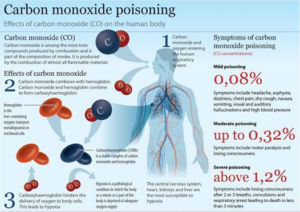
The best way to prevent CO leaks is to have your home's fuel-powered equipment thoroughly inspected each year. If you find any of these issues, take action fast.
Soot, smoke or back-draft inside the home. Burner flame appears yellow instead of clear blue (exception: natural gas fireplaces). Brownish or yellowish stains around appliances. Here are some ways to identify potential carbon monoxide leaks: But other things, like blocked flues and chimneys and faulty or restricted car exhausts, can lead to a build-up of CO, too. The most common cause of CO leaks is poorly maintained or poorly ventilated gas-fueled household appliances. You experience the above symptoms, but lack other symptoms that are generally associated with colds and flu, like fever, body aches and enlarged lymph nodes. More than one person in the home is affected with similar symptoms. Relief from symptoms when away from home. These are the most common symptoms associated with CO poisoning. If the condition is severe, you should call 911. If you think you or someone in your home has been exposed to CO, call the national toll-free Poison Help hotline at 1-80. On the other hand, at 12,800 ppm, within 1 to 3 minutes of exposure, a person may be rendered unconscious and die. Continued exposure at this level would eventually result in more hazardous build-up. For example, at 50 parts per million (ppm), you may be exposed for eight hours with no symptoms. The severity of CO poisoning and speed at which it occurs depend on the concentration of CO in the home. Chris Monroe/CNET Common symptoms of carbon monoxide poisoning This is why CO is often referred to as "the silent killer."Įven if you have a carbon monoxide detector, it's good to keep in mind the various symptoms associated with CO poisoning. 
If they are not familiar with the risks and CO poisoning symptoms, they may mistake those symptoms for other illnesses. The fact that CO is odorless and invisible makes it even more dangerous, because people often do not suspect exposure until they have already become ill. Each year in the US, more than 400 people die from unintentional CO poisoning, more than 20,000 end up in the emergency room and more than 4,000 are hospitalized. Carbon monoxide indoors or without proper ventilation can result in carbon monoxide poisoning and can be deadly. Sounds pretty harmless, right? Not always.

If you burn fuel in vehicles, small engines like lawnmowers, water heaters, clothes dryers, grills, gas fireplaces, gas ranges or gas furnaces, you have come in contact with carbon monoxide. You've most likely heard of carbon monoxide, but do you know what it is? Is it dangerous? Do you need a carbon monoxide detector in your home?Ĭarbon monoxide, or CO, is a colorless and odorless gas commonly found in home appliances and vehicles.






 0 kommentar(er)
0 kommentar(er)
